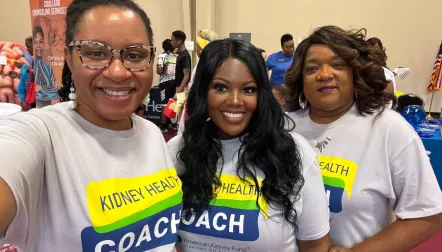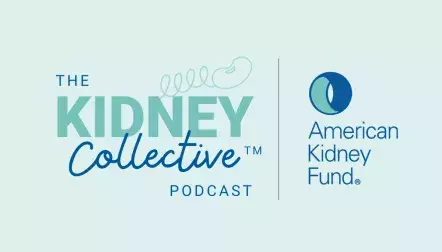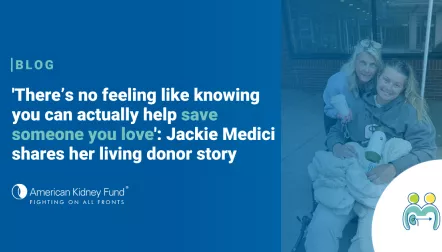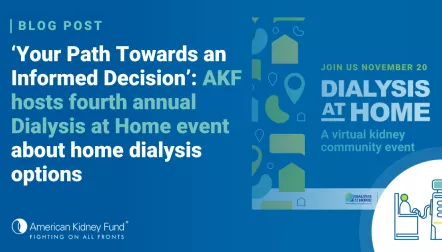
Blog post
7 truths about organ donation

As a transplant nephrologist for almost 30 years, I have treated a lot of people living with kidney disease and witnessed first-hand thousands of lives saved and enhanced through organ donation. I have been lucky enough to see patients grow up and go to college; live long enough to meet their grandchildren; go back to work and enjoy a fulfilling career; and fall in love, get married and start their own families.
I have also witnessed the results of the severe organ shortage in this country. Too often I have lost patients because the organ they needed did not come in time. Too many lives cut short. Too many dreams unlived.
Despite continuing efforts at public education, misconceptions and inaccuracies about donation persist. It is unfortunate if a person decides against donation because they do not know the truth.
There are two types of donation: donation from a deceased individual and donation from a living individual. While living donation is increasing, most transplants still come from deceased donors, and there are a lot of misconceptions about what it means to become an organ, eye and tissue donor after death.
If you are considering becoming an organ, eye and tissue donor after death, do not let those myths stop you from signing up. Here are some important truths you need to know:
1. You can be a donor at any age
People of all ages and medical histories should consider themselves potential donors. Your medical condition at the time of death will determine what organs and tissue can be donated.
2. Donation is still possible with many medical conditions
At the time of death, the appropriate medical professionals will review your medical and social histories to determine whether or not you can be a donor. With recent advances in transplantation, more people than ever before can be donors. It is best to tell your family your wishes and sign up to be an organ and tissue donor.
3. Being a registered donor has absolutely no impact on how hard doctors will work to save your life
If you are sick or injured and admitted to the hospital, the number one priority is to save your life. Your doctors will not take into consideration whether or not you have registered to be an organ donor. Organ donation can only be considered after death or brain death has been declared by a physician.
4. You can have an open-casket funeral
Throughout the process, the body is treated with dignity, care and respect. Donated organs are removed in an operating room with great surgical care.
5. Only medical factors are used to determine who gets the next transplant
When someone is on the transplant waiting list for a donor organ, what really counts is the severity of their illness, time spent waiting, blood type and other important medical information — not their wealth or celebrity status.
6. All major religions support donation
All major organized religions in the United States approve of organ and tissue donation and consider it an act of charity.
7. There is no cost to your family for organ donation
There is no cost to the donor's family or estate for organ and tissue donation. Funeral costs remain the responsibility of the family.
Just one person has the power to save or enhance the lives of more than 50 people through organ, eye and tissue donation. In addition to kidneys, hearts, lungs, liver, pancreas and intestine, tissues such as skin, bone, tendons and heart valves can be donated, as well as corneas.
In 2019, nearly 40,000 men, women and children received a life-saving or life-enhancing organ transplant in the United States. More than a million tissue transplants are also done in the United States every year.
While most organs transplanted are from deceased donors, people may also receive organs from living donors. Living donation offers an alternative for individuals awaiting transplantation from a deceased donor and increases the existing organ supply. Living organ donors made 7,383 transplants possible in 2019. Kidneys are the most common organ transplanted from living donors, followed by liver and lung. Living donors can provide one of their two kidneys, a lobe of their liver or a portion of a lung. The liver regrows in both the donor and recipient.
Both living and deceased donation offer hope to the 113,000 people waiting for an organ transplant right now — including nearly 97,000 who are waiting for a kidney transplant. It is easy to make a difference in their lives. Take just a few minutes and register to be a donor.
If you know someone who needs a transplant and you would like to learn more about living donation, you can contact their transplant center or read more here. It is also possible to donate an organ to a stranger.
Either way, you have the power to provide hope and give the gift of life!
Note: statistics in this article have been updated in 2020 to reflect current numbers





